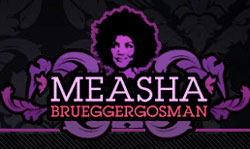I’m flattered/horrified that so many people e mailed and asked what I thought of the YouTube Symphony project. It doesn’t exactly BLOW MY MIND, but it’s not a bad thing.
Some thoughts:
- The London Symphony Orchestra Master Classes are amazing. I am so impressed that all the musicians took the time to tape them. This is something I’ve been trying to get my artists to do for a while, but I could never figure out the format. Should the master classes be sold on iTunes, should they be subscription podcasts? Given away for free on an artist’s site or on YouTube? Should they be based on technique elements – here’s the class on bowing, here’s the class on dynamics – or set-up like general, all-encompassing master classes? How do you deal with ability levels? So on, so forth. Anywho, this is great. As are the “personal conductor” videos. I’m going to set-up my not-dusty MacBook Pro next to my very-dusty harp in Connecticut over Christmas and see how Tan Dun and I do. Wendy Kerner Lucas would be so proud.
- I received a press release from the the ADORNO Ensemble about their ScoreXchange website yesterday with the subject, “Press Release: YouTube for the Rest of Us”. It got my attention because, of course, with all the YouTube Symphony buzz, I knew what they were referring to. This is an interesting point that did not come up in our What Can Publicists Do Better discussion: writing subjects and press releases that reference current events and trends in the industry. I like this idea because it proves that your artist/organization/project does not exist in a bubble and gives you and the person you are pitching a common ground from the start. Side note, though, ADORNO were a bit heavy on the snark (and I never think people are heavy on the snark!) for a press release: “It is a YouTube project, not for the classical masses, but for the rest of us that may not fit into to the formal ‘Carnegie Hall’ contingent.” As a general rule of thumb, let’s all strive not to sound bitter in our missives, although I realize the comedy potential is appealing.
- The fact that the selected orchestra is going to perform live at Carnegie Hall cracks me up a little. The web was good for auditions, but we need a “real” concert at the end of it all to legitimize the project? I mean, I get it, I just hope the end result will also be live on YouTube.
- I asked this at the launch event but didn’t get a straight answer: will audition-ees who accept comments on their videos be given an advantage, and will those comments be taken into consideration by the “international expert judging panel consisting of representatives from the London Symphony Orchestra, and other musical experts and organizations”?
- My friend James Holt pointed out the logos on the YouTube Symphony channel. Sure, we have Carnegie Hall and the LSO, but Lang Lang and Michael Tilson Thomas?

 Will that logo be used outside of the website, though? I don’t know. Should it be? Stamped on her Deustche Grammophon discs, included in her concert programs, put on her merchandise? Not surprisingly, I say sure, we are a culture who likes brand recognition so why not take advantage of that, but I see the other argument and could probably be convinced of it: these are people, not products. We should recognize their style and artistry because of their performances and personality, not visual aids.
Will that logo be used outside of the website, though? I don’t know. Should it be? Stamped on her Deustche Grammophon discs, included in her concert programs, put on her merchandise? Not surprisingly, I say sure, we are a culture who likes brand recognition so why not take advantage of that, but I see the other argument and could probably be convinced of it: these are people, not products. We should recognize their style and artistry because of their performances and personality, not visual aids.
Artist logos: friend or foe?

My first thought on a casual glance at the MTT logo would be “Mary Tyler who?” That doesn’t turn him into a product, it tries to turn him into an institution, and it’s gross. Brueggergosman’s, however, is delightful, and there should be t-shirts. But it shouldn’t be institutionalized as her permanent image. In the pop world, branding rarely takes the form of an unchanging logo either, does it? — the exceptions (KISS, for instance) are easy to think of.